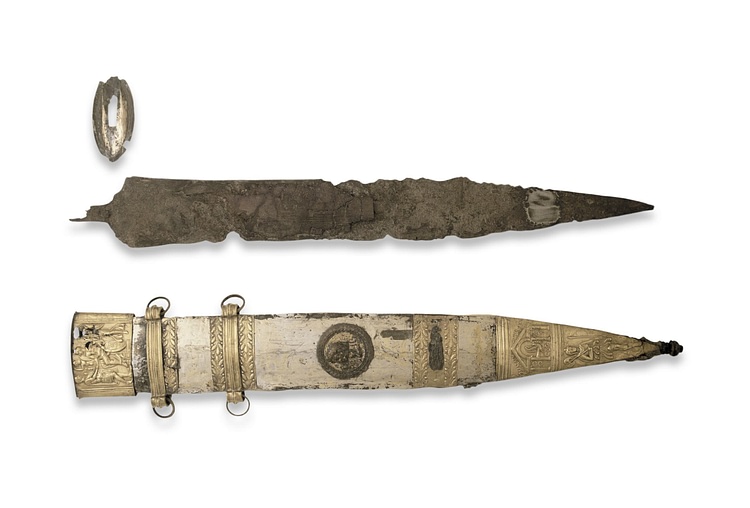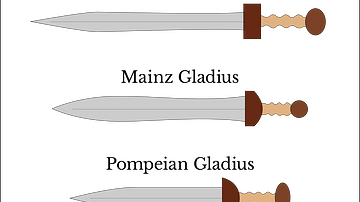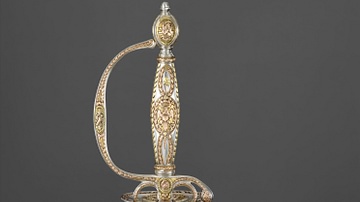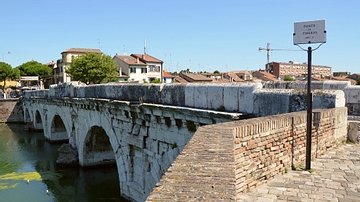Server Costs Fundraiser 2024
Illustration
A Roman gladius made c. 15 CE, pictured besides its bronze sheath, which is decorated with tin and gold. This particular sword was found near Mainz, Germany, which is where the style of gladius gets its name. The Mainz gladius was longer, and had a more triangular point than the older Gladius Hispaniensis type.
The ornate sheath depicts the Roman general (and future emperor) Tiberius (r. 14 to 37 CE) symbolically ceding victory to the Emperor Augustus (r. 27 BCE - 14 CE). The Roman war god Mars and the goddess Nike, the personification of Victory, are also pictured. It was likely commisioned by a Roman officer to commemorate a victory over the Germans in the Alps region.
Blade: 57.5 x 7 cm ( 22.6 x 2.7 in), Sheath: 58.5 x 8.7 cm (23 x 3.4 in). Image courtesy of the Trustees of the British Museum.
Cite This Work
APA Style
Museum, B. (2021, March 01). Mainz Gladius. World History Encyclopedia. Retrieved from https://www.worldhistory.org/image/13509/mainz-gladius/
Chicago Style
Museum, British. "Mainz Gladius." World History Encyclopedia. Last modified March 01, 2021. https://www.worldhistory.org/image/13509/mainz-gladius/.
MLA Style
Museum, British. "Mainz Gladius." World History Encyclopedia. World History Encyclopedia, 01 Mar 2021. Web. 26 Jul 2024.






